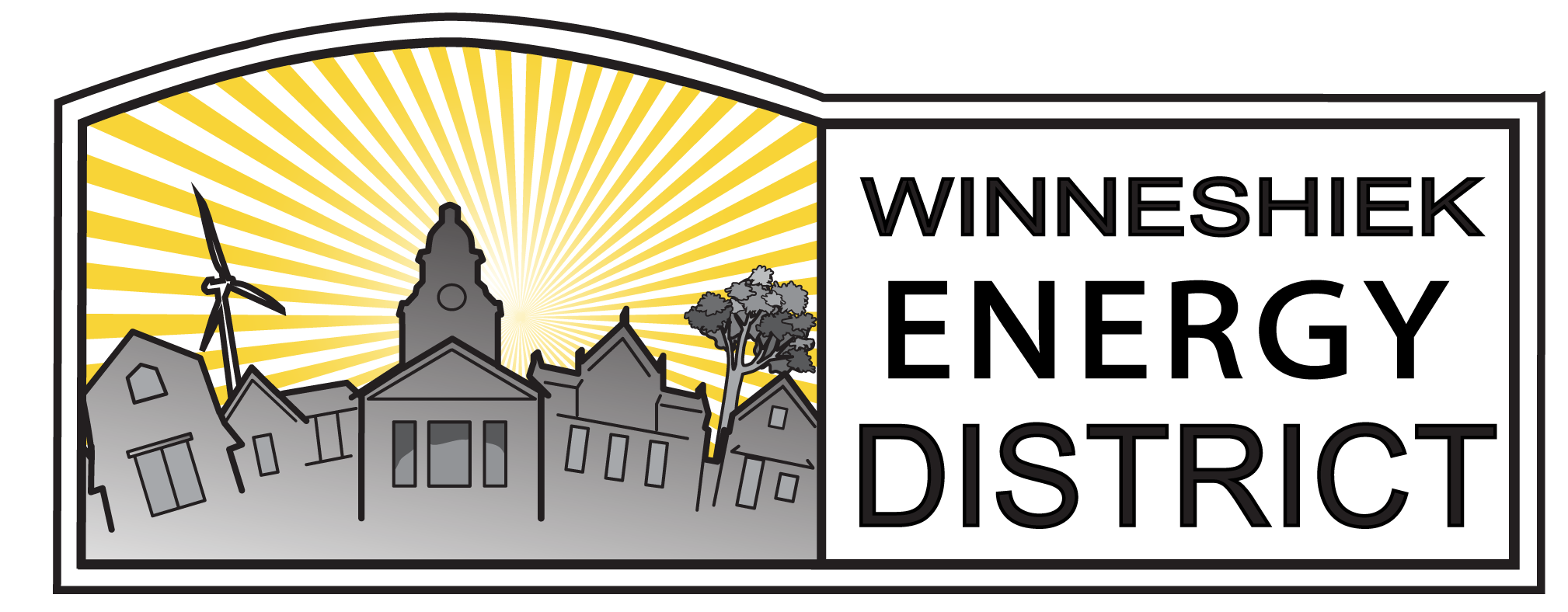March Energy Lunch: Electric Vehicle Planning in NE Iowa
In March, Michelle Barness from Upper Explorerland Regional Planning Commission, updated us on the regional EV planning study underway in Northeast Iowa. The study covers a 6 county area and looks at current market trends, charging infrastructure needs, models for public charging, and even EV job training programs! WED is excited to be a partner on this study.
EVs are experiencing an exponentially increasing share of the vehicle market. Winneshiek county is in the top 10 Iowa counties for straight number of EVs on the road and is top 3 when EV ownership is looked at on a per capita basis.
There are 3 types of EVs.
- Battery Electric – batteries are charged by plugging into the grid
- Plug-in Electric Vehicles (PEVs) – only electric, battery powered engines
- Plug-in hybrid vehicle (PHEVs) – batteries are charged by plugging in, internal combustion engine back up when batteries are depleted
- Hybrid Electric Vehicle (HEVs) – batteries recharged while driving, internal combustion and electric engines trade off while driving.
EVs have multiple benefits. Not only are carbon emissions drastically reduced, especially as the grid gets more and more power from renewable energy, but electricity is significantly cheaper than gasoline.
Electric engines are also way more efficient at than internal combustion engines. 59-62% of electric power consumed ends up as power at the wheels, in comparison, only 17-21% of the power in gasoline ends up as power at the wheels.
The money saving benefits of cheaper and more efficient energy use especially effect those of us living in rural areas. On average, rural drivers put many more miles on their vehicles and spend significantly more on repairs than our urban counterparts. On the flip side, rural drivers have more anxiety about the range of EVs because of more miles driven. And, as Iowans, we have to consider how cold weather reduces range due to less efficient battery functioning.
That said, range and battery storage capacity are increasing every year. At the same time, cost per kilowatt hour of storage is rapidly decreasing. Research suggests that once battery storage reaches a production price point of $100 per kilowatt hour, even more EVs will be the same price or cheaper than internal combustion engines. Since 2010, the price of batteries has dropped from over $1000 to an average of $137 per kilowatt hour of battery storage.
63 EVs are expected to be on the market by the end of 2021 with over 127 projected by 2023. The majority of those new models will be SUVs and sedans. Currently, Chevy Volts, Chevy Bolts, and Nissan Leafs are the most popular in our region while Teslas are the biggest sellers nationwide. (Curious about the EV pickups? Some will hit the market this year! Read our article here.)
Michelle Barness is looking at more than just market trends. Her study also takes a close look at EV charging infrastructure. Currently, there are only 6 public charging spots listed for our region of northeast Iowa.
Of the 6 spots, all are either Level 1 or Level 2 charging. Part of the study, is identifying locations to put additional charging stations.
- Level 1 is the slowest charging option. It is great for overnight charging or charging at your place of employment.
- Level 2 is faster charging and can recharge a vehicle in 4-6 hours.
- DC Fast Charging is most similar to being able to fill a gas tank. It will recharge a car in about 20-30 minutes. Currently, this charging level is not available to be installed in homes.
Click the video below to see Michelle Barness’ full talk, then click the links below to see her slides and join the discussion on the facebook page!
Slides from Michelle Barness’ Presentation: NE IA EV Project – March 2021 Energy Lunch
